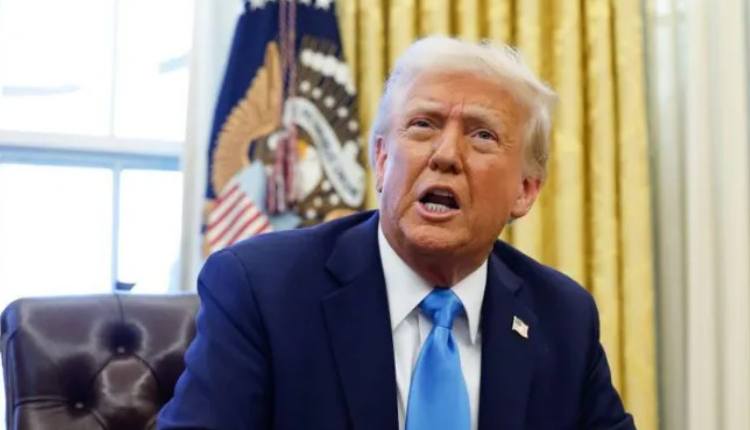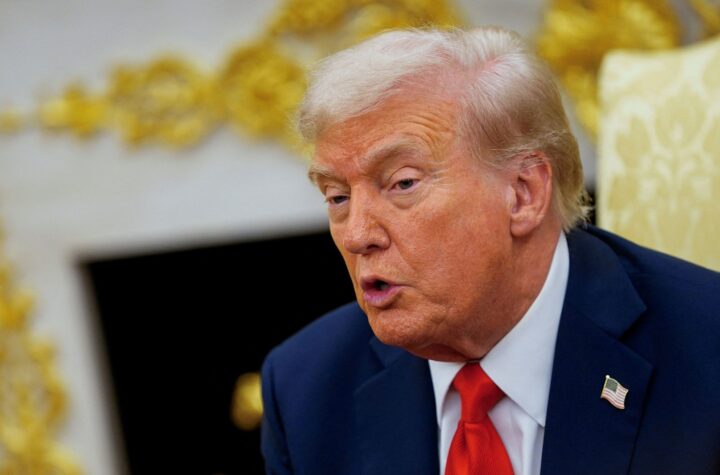US President Donald Trump is intensifying plans to impose tariffs on exports from countries he claims have unfair trade practices toward the United States. On Thursday, Trump signed a memorandum instructing his team to develop targeted tariffs for each country, considering factors like existing tariffs, exchange rates, trade balances, and other regulations.
In its statement, the White House emphasized that it wasn’t just tariffs but also other trade policies—particularly from the European Union—that were disadvantaging US exporters. While details of the plan remain unclear, it is expected to initiate global trade discussions.
The memorandum instructs Trump’s team to present a “reciprocal trade and tariffs” plan within 180 days. Howard Lutnick, Trump’s nominee for Commerce Secretary, stated the plan would be ready by April 1, 2025. Trump framed the tariffs as part of his strategy to attract investment to the US and boost manufacturing. “If you build your product in the United States, there are no tariffs,” he said, emphasizing fairness and reversing previous trade imbalances.
Countries that could be impacted by these tariffs include the European Union, India, Vietnam, and Thailand—nations with higher tariffs and significant export relationships with the US. Ahead of a meeting with Indian Prime Minister Narendra Modi, Trump reiterated his stance on reciprocal tariffs, saying, “Whatever India charges us, we charge them.” India has already begun lowering tariffs on items like motorcycles, which Trump highlighted during his first term.
Both Thailand and Vietnam are reviewing their trade relations with the US, and ahead of Trump’s announcement, the European Union expressed its commitment to maintaining a close partnership with the US, while preparing to protect its interests if necessary.
Reciprocal tariffs, a form of tariff where countries impose equal taxes on each other’s imports, are central to the plan. Historically, the US has supported free trade with low tariffs, except on certain products like steel and footwear. The average US tariff rate is 3.4%, compared to 5% in Europe. The White House cited disparities, such as the 10% tariff on US-made cars in Europe versus the 2.5% tariff on imported cars in the US, as justification for the new approach. Additionally, concerns about digital services taxes and the European Union’s Value Added Tax (VAT) on US-based tech companies like Big Tech were raised.
The UK could also be affected, with Duncan Edwards of BritishAmerican Business noting that the details of how reciprocal tariffs will be calculated will be crucial. Although the UK’s trade with the US is balanced, the uncertainty makes it hard to predict the full impact of these measures.
The announcement is part of a broader series of tariff actions under Trump’s administration. Earlier this week, he ordered a 25% tax on imported steel and aluminum, ending exemptions for countries including the EU, UK, and Brazil. He also raised tariffs on Chinese goods to 10% and warned of potential 25% duties on imports from Canada and Mexico, although this move is currently on hold until March.
Trump’s tariff plans have caused concern on Wall Street, where stocks rose after the announcement, as no immediate tariffs were imposed. While some experts like John Cassidy of Red Cedar Investment Management caution against overreaction, others like Alex Durante from the Tax Foundation warn that tariffs could escalate into a global trade war, increasing uncertainty for US businesses. Despite these warnings, Trump dismissed concerns, asserting that his strategy would boost US manufacturing and jobs in the long run.
Polls indicate a lack of public support for tariffs, with a Marquette Law School survey showing that only 24% of Americans believe tariffs will help the economy. Many are worried about the potential for higher prices, which could lead to inflation and increased living costs.











More Stories
Trump Announces Drug Pricing Deals to Cut Cost of Weight-Loss Medications
Poor Engineering Led to Titan Submersible Implosion, Say US Authorities
Nvidia Boss Predicts UK Will Become an “AI Superpower” as Tech Giants Pledge Billions